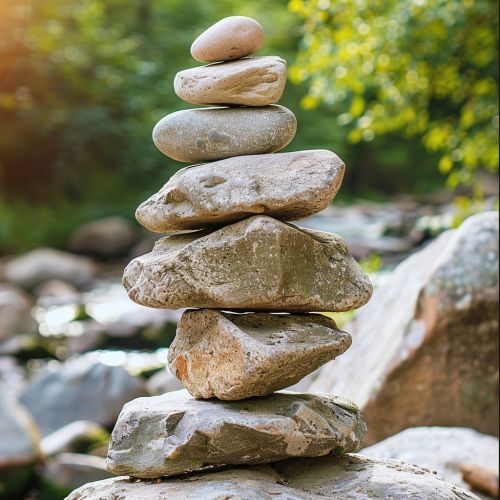Cairn
Overview
A cairn is a human-made pile or stack of stones. The term is derived from the Scottish Gaelic word "càrn," which has a broader meaning, referring to various types of hills and natural stone piles. Cairns have been and are used for a broad variety of purposes, from prehistoric times to the present.


History and Archaeology
In archaeology, cairns are often used to mark Neolithic burial sites. These burial cairns are also known as tumuli, and they can be found throughout the world in different cultures. For instance, in Scandinavia, these stone piles are called "rå" and "seita," and they were used for religious purposes by the Sami people. In North America, the Inuit people use stone piles or inuksuit, not only for navigation but also as hunting and gathering site markers.
Functions and Uses
Cairns have various functions, both in the past and in the present. They are often used as landmarks, due to their human-made nature and their contrast with the natural environment. This makes them useful for wayfinding, especially in areas with few distinct natural features.
In addition to their practical uses, cairns have also been used for ceremonial purposes, such as in Buddhism, where they are used in stupa construction. They can also serve as a form of commemoration, marking the location of a significant event or the death of a person.
Construction and Types
There are several types of cairns, depending on their purpose and the region where they are found. Some common types include the previously mentioned burial cairns, landmark cairns, and navigational cairns. The construction of a cairn can be a simple process, involving the piling of stones on top of each other, but it can also be more complex, involving the selection of specific stones and careful balancing.
Modern Cairns
In modern times, cairns are often built by hikers and other outdoor enthusiasts as a form of expression or to mark a trail. However, this practice is sometimes controversial, as it can lead to damage to the natural environment and can confuse other hikers if the cairns are used for navigation.
